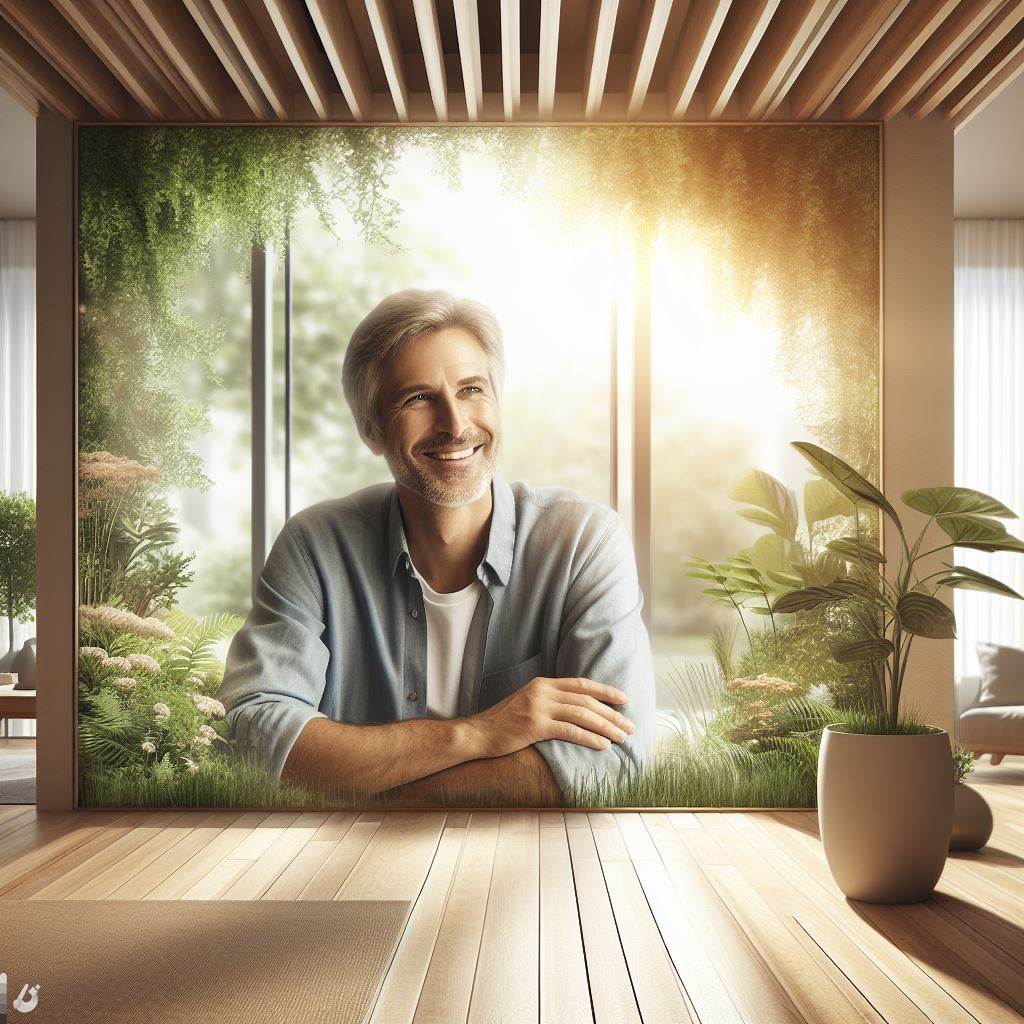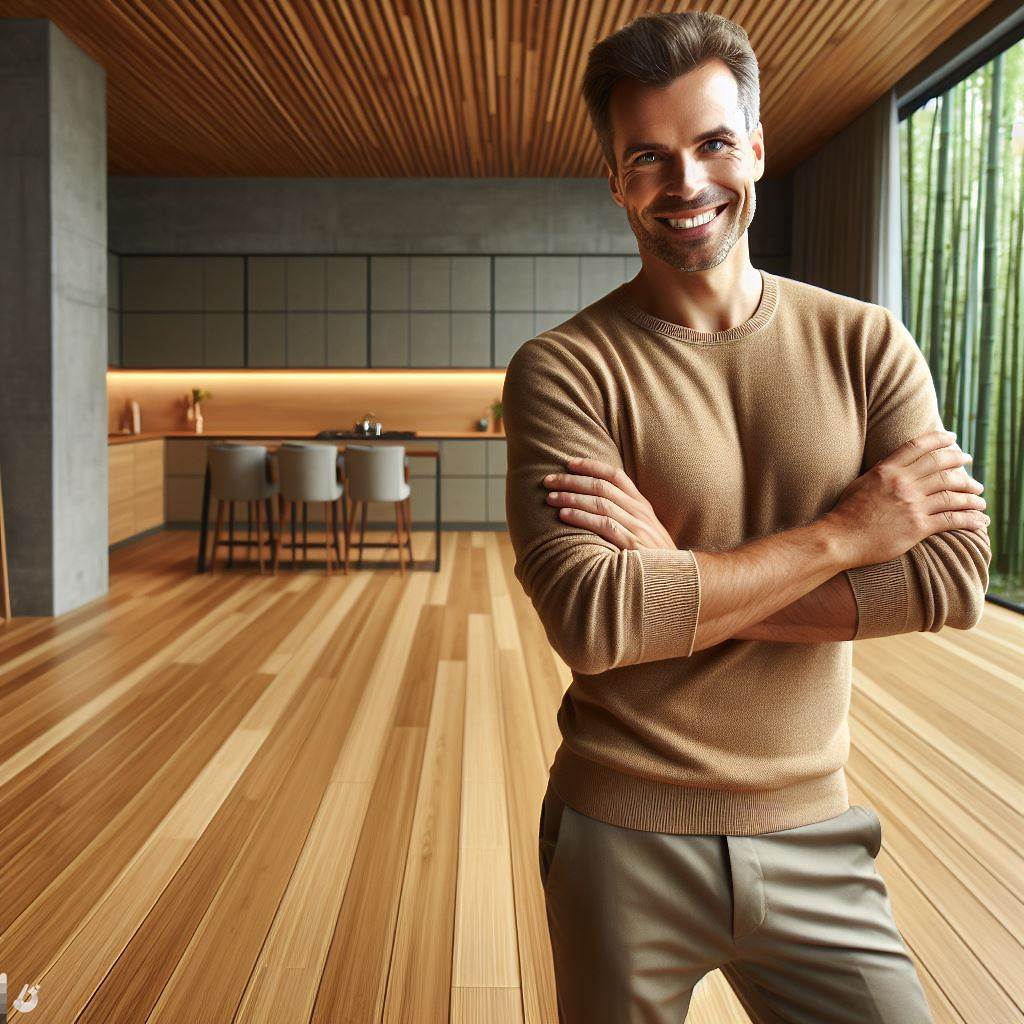Introduction
In today’s fast-paced world, the importance of biophilic design in modern homes cannot be overstated. Nature-inspired elements bring tranquility.
Amidst urban chaos, incorporating nature into living spaces becomes a refuge, promoting well-being and reducing stress levels.
Biophilic design goes beyond aesthetics, fostering a deep connection with the natural world.
The symbiotic relationship between humans and nature is fundamental to our physical and mental health.
Biophilic design seamlessly integrates natural elements into architectural structures, creating harmonious living environments.
Biophilic design is more than a trend; it’s a philosophy that recognizes humanity’s innate connection with nature.
It involves incorporating natural elements directly into the design, creating a synergy between the built environment and the natural world.
This design approach is not merely about adding greenery; it encompasses a holistic integration of natural light, organic shapes, and sustainable materials.
It seeks to blur the boundaries between indoor and outdoor spaces, fostering a sense of unity with the environment.
By strategically placing elements like indoor gardens, water features, and natural materials, biophilic design aims to evoke the calming essence of nature within the confines of modern living.
The goal is to create spaces that resonate with the inherent affinity humans have for the natural world.
In essence, biophilic design transforms houses into sanctuaries where residents can thrive, finding solace in the embrace of nature.
As we delve deeper into the facets of biophilic design, we will explore its diverse applications and unveil its transformative impact on the way we inhabit our homes.
Principles of Biophilic Design
Biophilic design is an innovative approach that aims to create harmony and connectivity between modern homes and nature.
By incorporating elements found in the natural world, this design philosophy seeks to enhance the overall well-being and quality of life for occupants.
There are several key principles that guide biophilic design, including the use of natural materials, the incorporation of natural light, the integration of indoor plants, and the inclusion of views of the natural environment.
Use of natural materials
One important aspect of biophilic design is the use of natural materials in the construction and interior design of modern homes.
Natural materials, such as wood, stone, and bamboo, offer a range of advantages.
They contribute to a sense of warmth, texture, and visual appeal, creating a more inviting and organic living space.
Natural materials are often more sustainable and eco-friendly, reducing the environmental impact of the home.
Examples of natural materials commonly used in modern homes include hardwood flooring, exposed brick walls, and natural stone countertops.
These materials add a touch of nature, creating a seamless transition between the indoors and outdoors.
Incorporation of natural light
Another principle of biophilic design is the incorporation of natural light into the home.
Natural light has numerous benefits for both physical and mental well-being. It helps regulate our circadian rhythm, improves mood, and enhances productivity.
By maximizing the use of natural light, homeowners can reduce energy consumption and create a bright and cheerful living environment.
Strategies for maximizing natural light include using large windows, skylights, and glass doors to allow ample sunlight to enter the home.
The use of light colors on walls and furniture can also help reflect and distribute natural light throughout the space.
Integration of indoor plants
Indoor plants play a significant role in biophilic design, acting as natural air purifiers and adding a touch of greenery to the home.
Research has shown that indoor plants can improve air quality, increase humidity levels, and reduce stress levels.
They also create a sense of calmness and relaxation.
Incorporating plants in home décor can be done in various ways. Hanging plants, potted plants, and vertical gardens are popular choices.
Using planters or terrariums as decorative accents can bring nature into any room while adding a unique touch to the overall design.
Views of the natural environment
Connecting with outdoor views is an essential aspect of biophilic design.
Taking advantage of natural scenery can have a positive impact on mental health and well-being.
Incorporating windows that frame scenic views can create a tranquil and refreshing atmosphere within the home.
To optimize views in modern homes, strategic placement of windows is crucial.
Designing open floor plans and positioning living areas near windows can provide occupants with stunning vistas and a constant connection to the outside world.
Creating outdoor spaces like balconies or patios allows individuals to immerse themselves in nature.
Incorporating the principles of biophilic design into modern homes can significantly enhance the overall living experience.
By using natural materials, maximizing natural light, integrating indoor plants, and optimizing views of the natural environment, homeowners can create spaces that promote well-being, connection with nature, and a sense of harmony.
Embracing these principles allows for a more sustainable, healthy, and visually appealing living environment.
Read: 2024’s Top Materials for Exterior Design
Benefits of Biophilic Design
Biophilic design offers numerous benefits to both physical and mental well-being, as well as promoting sustainability.
Here, we explore the advantages of incorporating biophilic design elements into modern homes.
Improved physical health
One major benefit of biophilic design is its positive impact on physical health.
Natural elements, such as plants, water features, and access to sunlight, can significantly improve our well-being.
- Stress reduction and lower blood pressure: Living in an environment inspired by nature has been proven to reduce stress levels and lower blood pressure.
The presence of greenery and natural light creates a calming and soothing atmosphere. - Enhanced immune system functioning: Biophilic design can also boost immune system functioning.
Exposure to natural elements stimulates our immune response, helping to fight off illnesses and promote overall health.
Mental well-being and stress reduction
Biophilic design not only has physical health benefits but also positively impacts our mental well-being.
Incorporating nature into our surroundings can have a profound effect on our mood and overall happiness.
- Positive impact on mood and mental health: Being surrounded by nature improves our mood, reduces anxiety levels, and promotes a sense of well-being.
It creates a more serene and peaceful environment, allowing us to feel more connected to nature. - Effects on productivity and concentration: Nature-inspired environments have been shown to enhance productivity and concentration levels.
Spaces designed with biophilic elements, such as natural lighting and views of nature, can improve focus and creativity in both work and living areas.
Increased sustainability
Biophilic design not only benefits our health but also contributes to a more sustainable lifestyle.
By incorporating natural elements, we can create environments that are more energy-efficient and environmentally friendly.
- Biophilic design and energy efficiency: Integrating natural elements, such as passive solar design and natural ventilation, can reduce energy consumption and decrease our carbon footprint.
This contributes to a greener and more sustainable future. - Contribution to sustainable living practices: Biophilic design aligns with sustainable living practices by promoting the use of local, renewable materials and reducing reliance on artificial resources.
It encourages a deeper connection with the environment and a more mindful approach to design and construction.
In short, biophilic design offers a range of benefits, including improved physical health, enhanced mental well-being, and increased sustainability.
By embracing nature in our homes, we can create spaces that promote our overall well-being while reducing our impact on the environment.
Read: Smart Lighting: A Bright Idea

You Might Also Like: DIY Renovations: Skills You Need to Know
Biophilic Design Trends in Modern Homes
Biophilic design has become a popular trend in modern homes.
With people spending more time indoors, the need to reconnect with nature has never been greater.
This design concept aims to bring the outside world into interior spaces, creating a harmonious and calming environment.
In this section, we will explore three key biophilic design trends: indoor gardens and living walls, nature-inspired color palettes, and outdoor living spaces.
Indoor gardens and living walls
Indoor gardens and living walls are effective ways to incorporate nature into the home.
The, indoor gardening techniques such as vertical gardens, terrariums, and potted plants allow homeowners to have a small piece of nature indoors.
These living elements not only add beauty to the space but also promote better air quality by filtering toxins.
They create a sense of freshness and vitality, making the environment more inviting and peaceful.
Living walls in interior design have gained significant popularity in recent years.
These vertical gardens are composed of plants growing on a vertical surface, usually a wall.
Living walls not only serve as a striking visual feature but also offer numerous benefits.
They contribute to improved air quality by absorbing pollutants and releasing oxygen.
Additionally, living walls help regulate humidity levels, reducing the need for artificial humidifiers.
Incorporating these green walls into interior spaces adds a touch of nature, making the environment more vibrant and visually appealing.
Nature-inspired color palettes
Nature-inspired color palettes are another aspect of biophilic design that brings the essence of the outdoors indoors.
Popular color schemes inspired by nature include earth tones like browns and beiges, serene blues resembling the sky and water, and calming greens reminiscent of foliage.
These natural colors have a profound psychological impact on individuals.
Earth tones provide a sense of warmth and stability, while blues and greens evoke feelings of calmness and tranquility.
Incorporating these natural hues into home design creates a soothing and relaxing atmosphere.
Outdoor living spaces
Outdoor living spaces have become increasingly valued in modern homes.
Connecting with nature and spending time outdoors has numerous physical and mental health benefits.
Outdoor spaces provide a retreat from the fast-paced, technological world and offer a place for relaxation and rejuvenation.
Designing inviting outdoor areas can be achieved by incorporating comfortable seating, ambient lighting, and natural elements like water features or fire pits.
Creating a seamless transition between indoor and outdoor spaces allows homeowners to fully embrace their natural surroundings.
In general, biophilic design trends in modern homes emphasize the importance of incorporating nature into our living spaces.
Indoor gardens and living walls bring greenery and freshness indoors, while nature-inspired color palettes create serene and calming environments.
Outdoor living spaces provide opportunities for relaxation and connection with the natural world.
By embracing these trends, homeowners can enjoy the benefits of biophilic design and create a harmonious living environment that promotes well-being and tranquility.
Read: Color Trends 2024: Bold in Modern Homes
Implementing Biophilic Design in your Home
Biophilic design, the concept of integrating nature into our living spaces, has gained significant popularity in modern homes.
This approach emphasizes the connection between humans and the natural environment, aiming to promote a sense of well-being and harmony.
If you are interested in implementing biophilic design in your own home, here are some steps to follow.
Assessing your home’s potential for biophilic design
The first step is to evaluate your home’s existing features and layout to identify opportunities for incorporating nature elements.
Look for areas that can be enhanced by bringing in more natural light, such as installing larger windows or skylights.
Consider the orientation of your home to maximize exposure to natural sunlight and views of surrounding greenery.
Take note of any existing outdoor spaces that can be better utilized.
A balcony, patio, or backyard can be transformed into a mini oasis by adding plants, water features, or even a small vegetable garden.
Evaluate the flow and layout of your home to ensure that these natural elements are seamlessly integrated.
Consulting with professionals
To achieve the best results, consider consulting professionals who specialize in biophilic design.
Engaging architects and interior designers experienced in this field can provide valuable insights and ideas tailored to your home’s specific characteristics and your personal preferences.
They can suggest innovative ways to incorporate natural materials, textures, and colors into your interior design.
Consulting with landscapers or horticulturists can help you create a cohesive connection between your indoor and outdoor spaces.
They can assist in selecting the right plant species for your climate, provide advice on garden design, and propose strategies to optimize the natural ventilation and cooling of your home.
DIY biophilic design ideas
Implementing biophilic design doesn’t have to break the bank. There are numerous budget-friendly ways to incorporate biophilic elements into your home.
Start by adding houseplants to various rooms, as they not only provide a touch of nature but also improve indoor air quality.
Consider using natural materials like wood, stone, or recycled materials in your furniture and decor choices.
Integrate natural patterns, such as leaf motifs, into wallpaper, curtains, or upholstery. These simple additions can evoke a sense of nature in your home.
From vertical gardens to natural aromatherapy, there are endless possibilities to explore.
In a nutshell, implementing biophilic design in your home requires assessing its potential, consulting professionals, and considering DIY ideas.
By incorporating natural elements into your living spaces, you can create a sanctuary that promotes well-being, relaxation, and a deeper connection with the natural world.
Read: The Rise of Smart Kitchen Tech
Conclusion
Biophilic design not only enhances the aesthetics of a modern home but also contributes to the well-being of its occupants.
It promotes improved air quality, reduced stress levels, increased productivity, and better overall health.
Additionally, make use of online resources and inspiration for DIY projects.
Websites, social media platforms, and magazines dedicated to biophilic design offer a wealth of ideas and tutorials for creating your own nature-inspired home decor.
As an increasing number of people seek to reconnect with nature, incorporating biophilic elements in our living spaces becomes essential.
By integrating natural materials, plants, and views of the outdoors, we can create soothing and inspiring environments.
The future looks promising for biophilic design in real estate.
With a growing understanding of the benefits and a rising demand for sustainable and holistic living, biophilic design will continue to gain popularity.
It will become a standard approach in creating modern homes that prioritize human well-being and environmental harmony.




